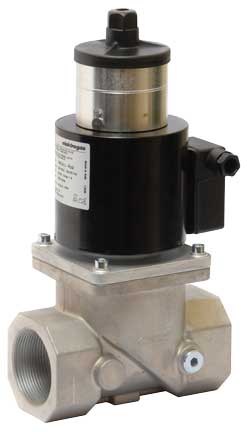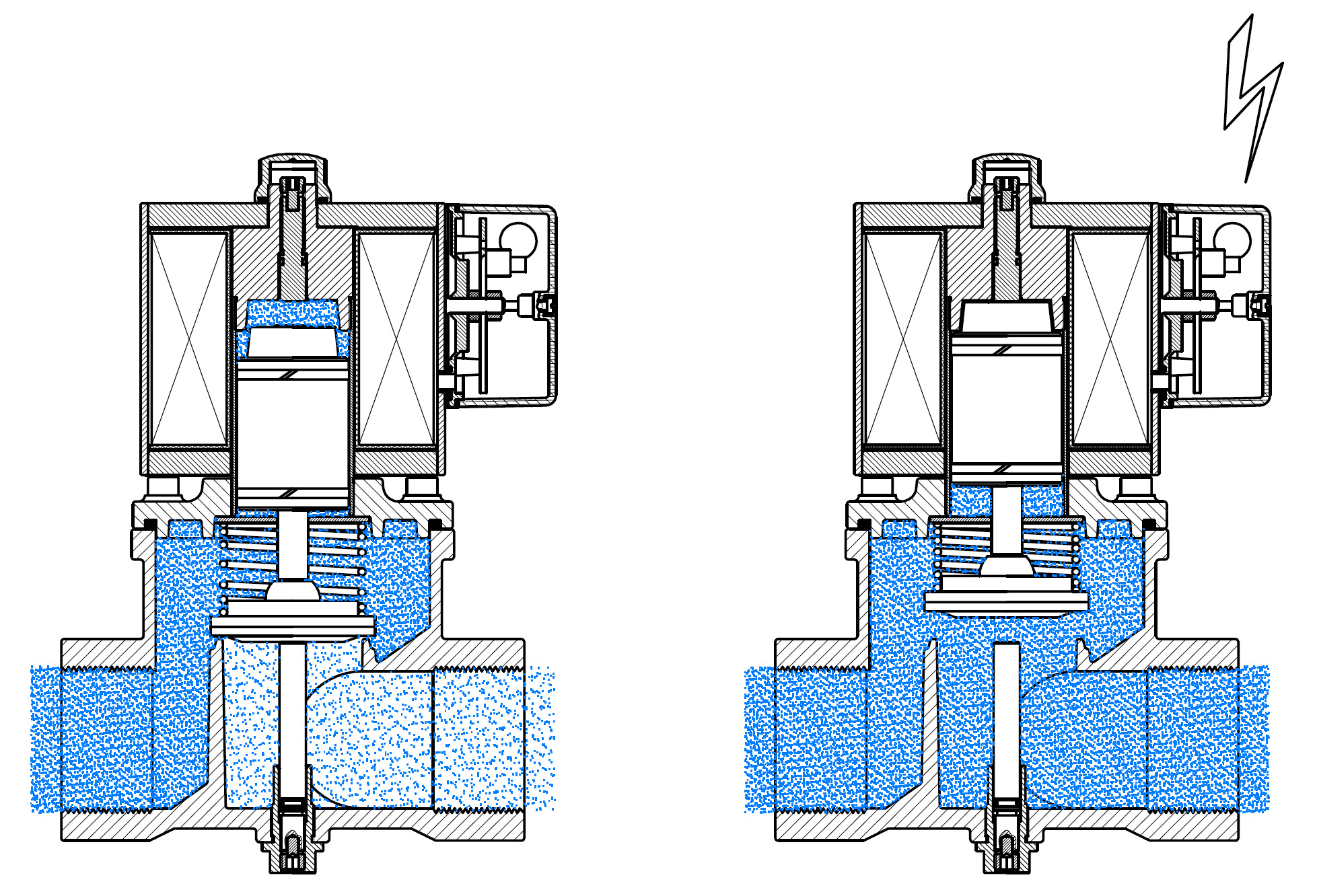The term “air valve” can refer to several distinct pieces of equipment. Combustion requires heat, fuel, and oxygen, and we usually see oxygen provided as a component of ambient air (the air we breathe). The type and quantity of air valves on a system is determined by the application and the control scheme.
We might have very little air control, relying on gas modulation. Or we might have nearly the same control equipment on the air and gas lines. Or, and this is most common for us, you might find a cross-connected (ratio) regulator on the gas line. A cross-connected regulator uses an air impulse line to maintain a constant ratio of gas and air.
Selecting and sizing an air valve requires you to consider several factors, and perhaps the most important of these are pressure and flow, with temperature a close third. Pressure and flow allow you to size the valve according to an acceptable pressure drop. Too much pressure drop can effect the performance of your burner. But if we’re talking about controlling flow, some pressure drop is required for a proper range of control.
We’ll go through three of the most common types of air valves today. These are on/off (seated) valves, butterfly valves, and linear control valves.
On/Off Air Valves
We’re using the term “on/off,” but that’s a little misleading. These solenoid air valves can be used for on/off flow of cold combustion air, but they can also be used for high/low flow (or high-fire/low-fire position). This type of valve is often used for pulse-fire applications, as many solenoid valve models are known for a high number of lifetime on/off cycles.
It’s common to see some air flow even when a burner is off, but we’ve encountered applications which require a tight shut-off for the air. We don’t often see sealed butterfly valves in combustion applications, so an air solenoid valve is the first thing we think of when we need a tight seal on the air line.
Solenoid valves for air can normally be found in three opening/closing options: fast/fast, slow/fast, slow/slow. The high-fire and low-fire positions can be set using flow adjustment screws. The above example is for an Elektrogas VRA. The high-fire position is set at the top of the valve, near the coil, accessed by removing the nut. The low-fire position is set at the bottom of the valve, under the valve body.
Butterfly Valves
Perhaps the most common air valve is the butterfly valve. Butterfly valves we’re familiar with do not have a tight seal, so they allow some flow even when completely closed. These valves aren’t meant to stop flow, but instead to control the flow rate. When most effective, they offer a wide range of control.
Sizing
A butterfly valve is sized based on the pressure and flow requirements of the system. Taking a hard look at the flow chart for a butterfly valve given these factors gives you the opportunity to select a valve that will provide a wide range of control. It’s all too common to find a butterfly valve has been sized according to the pipe diameter; this usually means the valve is too big.
If a butterfly valve is oversized, then no matter the degree of openness, you will either have full flow or minimum flow. If a butterfly valve is undersized, then you’re likely to drop more pressure than you want (and the velocity through the valve will exceed the manufacturer’s recommendations).
You can often avoid complicated pipe changes by using butterfly valves with reduced bores. These retain a larger outside diameter (for fitting between pipe flanges) while employing a reduced orifice (for greater pressure drop/flow control).
Butterfly valves are also selected based on the fluid temperature. High temperature butterfly valves often have a long stem, to help remove the actuator from the worst of the heat. In extreme cases, heat shields may be employed to deflect the heat away from the actuator.
Butterfly valves rely on actuation to change positions. In a system with fixed air, a manual handle may be all you need. In a system with two positions (low- and high-fire), a solenoid actuator will perform well. And if you’re relying on an analog input to allow the system to react to changes in heat demand, a servomotor actuator is what you need.
Linear Control Valves
Linear flow valves offer extremely precise, linear control. These valves employ a servomotor driven actuator which is controlled by a modulating signal from the temperature controller. By coupling a linear flow valve with a servomotor using a 16-bit microcontroller you can achieve continuous control. This means the needs of the flame are directing the angle of the valve between 0 and 90.
The flow varies according to the opening angle of the inner cylinder, while the outer cylinder is fixed. The servomotor rotates the inner cylinder, opening or closing the gas passage. The maximum flow is typically set manually by adjusting a screw on the valves body with an Allen key.
Can you recommend an air valve?
Certainly! We recommend Elektrogas valves. The VRA, VLA, and VTA are suitable for high/low fire applications. The VF, VFH, and VFT are butterfly valves. The LMV is a linear flow valve for continuous control.
For Automation
We believe in automation for all! Visit olstrad.com and contact us to learn how we can help you automate!













